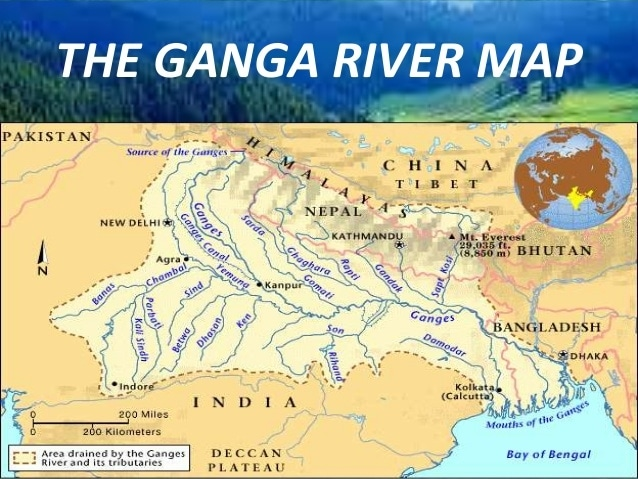Biodiversity & Environment
Conservation Plans for Cities along Rivers
- 12 Jul 2021
- 4 min read
Why in News
A policy document from National Mission for Clean Ganga (NMCG) has proposed that cities situated on river banks should incorporate river conservation plans when they prepare their Master Plans.
- The recommendations are currently for towns that are on the main stem of the river Ganga which are in five States — Uttarakhand, Uttar Pradesh, Bihar, Jharkhand, West Bengal.
- NMCG is the implementation wing of National Ganga Council (set in 2016; which replaced the National Ganga River Basin Authority (NGRBA)). Along with its state counterpart organizations, NMCG implements the Namami Gange Programme.
Key Points
- Emphasis of the Policy Document:
- On the need for river-sensitive plans that must be practical (as envisaged in the National Water Policy).
- There should be a systematic rehabilitation plan to remove encroachment that emphasizes on alternative livelihood options along with a proper relocation strategy.
- Planners should make every attempt to engage stakeholders (encroacher, land owners) in order to develop empathetic and humane solutions.
- The plan must also clarify on land ownership. Ascertaining the land ownership in these areas is important to avoid legal complications while the Plan is being implemented.
- A key aspect of conserving and protecting river and riverine resources involves increasing green cover in the vicinity of the river by creating green buffers, removing concrete structures and employing “green infrastructure.”
- Significance:
- The Master Plan can “create an environment” for facilitating the use of state-of-the-art technologies for river management.
- These include satellite-based monitoring of water quality; artificial intelligence for riverine biodiversity mapping; big data and citizen science for river-health monitoring; unmanned aerial vehicles (UAV) for floodplain mapping.
- In coming years the nature and type of technologies are expected to become more sophisticated and effective. Thus, the cities will be ready to embrace these seamlessly.
- The Master Plan can “create an environment” for facilitating the use of state-of-the-art technologies for river management.
Key Features of National Water Policy, 2012
- Integrated Water Resources Management: It laid down the concept of an Integrated Water Resources Management approach that took the river basin/sub-basin as a unit for planning, development, and management of water resources.
- Integrated Water Resources Management (IWRM) is a process that promotes the coordinated development and management of water, land and related resources in order to maximize the resultant economic and social welfare in an equitable manner without compromising the sustainability of vital ecosystems.
- Minimum Water Flow: To maintain the minimum flow of a portion of a river to meet ecological needs.
- In 2018, such an approach led the government to require minimum water levels to be maintained in the Ganga throughout the year by refraining from hoarding water beyond a point.
- Emphasis was also made to make a minimum quantity of potable water available to citizens for maintaining essential health and hygiene.
- Inter-basin Transfers: To meet basic human needs and achieve equity and social justice, inter-basin transfers of water need to be considered on the basis of the merits of each case after evaluating the environmental, economic and social impacts of such transfers.
- Other reasons such as decreasing spring sets in Himalayas, budgeting and restructuring of water subsidies, irrigation, etc. demanded the prioritization of water usage.







